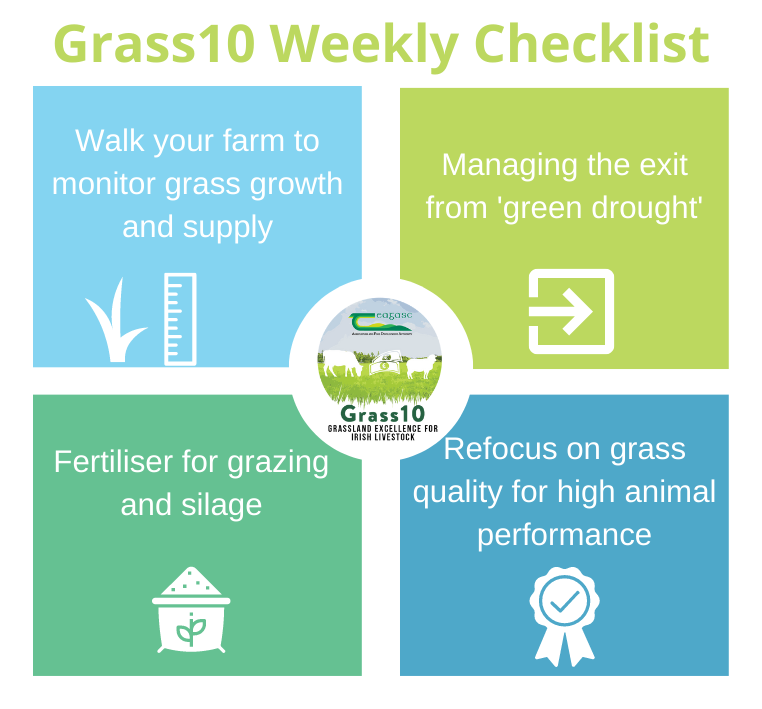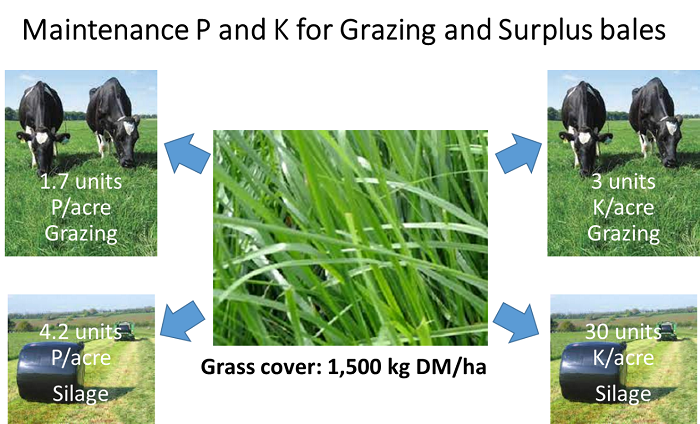21 June 2023
Managing the exit from ‘green drought’

Rainfall was welcome in all areas last week to lower soil moisture deficits (SMD). Some areas received more rainfall than others. Further rainfall is predicted over the next seven days.
Grass growth is predicted to increase across the country, with increased moisture and high soil temperatures. In this week’s edition of the Grass10 newsletter, the Grass10 team outline how to manage the exit from the ‘green drought’.
The focus now should be to reduce supplement – especially silage, palm kernel and soya hulls – to increase demand in line with grass growth and supply. Walking the farm every five days allows you to do this effectively, saving costs and optimising animal performance.
The goal is to get the grass wedge and PastureBase figures back to the mid-season grazing targets. A rotation length of 20-25 days will be key for this to allow grass plants to recover. Let average farm cover (AFC) build back to 600-700kg DM/ha.
Predicted grass growth rates will be ahead of current demand, but many wedges are flat due to prolonged period of low growth. If a flat wedge exists, many paddocks will reach the pre-grazing yield at the same time; start grazing the first covers at 1,000kg DM/ha to avoid running into heavy pre-grazing yields. In addition, make sure animals are grazing out paddocks to 4cm. Dry matter percentage is still high, so target high grass utilisation.
In terms of reseeds, most should be suitable for post-emergence spray. To strengthen roots and encourage tillering, graze when they get to ~800kg DM/ha.
Refocus on grass quality for high animal performance
Grass quality on many paddocks is poor. Difficult grazing conditions during the spring led to high residuals and stress during the recent green drought. While some paddocks were corrected during high growth in May, more needs to be done to correct grass quality in some cases.
Some paddocks can be baled as growth increases above demand. Some can be baled out next rotation. Some can be grazed at 1000-1,100kg DM/ha to make it easier for stock to graze out. Although topping of one or two very stemmy paddocks is ok, avoid blanket topping the farm as this will slow down growth and waste valuable feed. Remember the focus should be to conserve as much feed as possible, as many farms are only at 60-70% of the winter fodder requirement.
Fertiliser for grazing and silage
Maintenance phosphorous (P) and potassium (K) requirements of a paddock in any given year will depend on the yield of the paddock and if the paddock was primarily grazed or if there was silage harvested.
When grazed, animals will recycle 90% of the K in the grass back on to the paddock in dung and urine. If baled, 100% of the K in the grass is removed from the field (see infographic below).

Use watery slurry or parlour washings to supply nutrients – especially to clover or silage paddocks. Don’t forget sulphur now, as it is essential for nitrogen uptake and fixation in grass-clover swards. In terms of fertiliser applications for grazing, aim for 15-20u N/ac + sulphur, as there will be increased N release from the soil due to rainfall and above average soil temperatures.
For more information on the Grass10 Campaign and to sign up to future newsletters, click here.
